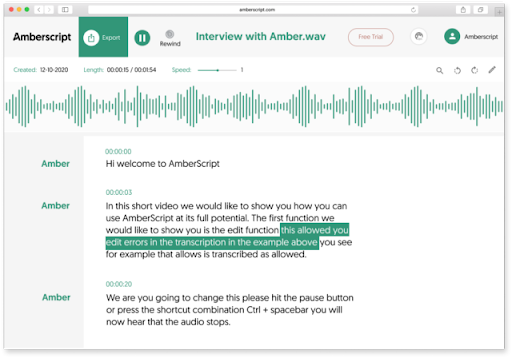The Significance of Accessibility Guidelines in Web Design

The Web Content Accessibility Guidelines (WCAG) serve as a subset of the rules for making websites accessible for people with disabilities.
They were written by the World Wide Web Consortium's (W3C) Web Accessibility Initiative (WAI). W3C is the primary institution for implementing appropriate standards for the Internet.
The WCAG explains how online services and techniques must be made available to everyone, even people with disabilities.
The following are the categories of people with disabilities:
- Vision: people who are blind, partly sighted, or can't see colors.
- Hearing: people who suffer from deafness or have trouble listening.
- Mobility: people who have trouble using input devices like a mouse or keyboard.
- People with autism, dyslexia, or learning problems who have trouble reading, writing, or understanding.
All websites run by the United Kingdom's (UK) public sector have to follow these rules by law. Government Sector Organizations which run mobile apps and websites are mandated by law to abide by the WCAG.
What is the importance of the WCAG in web design: 6 significant benefits
Disabled persons will be able to use your website's material, product lines, and services, which is the primary significance of website accessibility.
But the benefits of making the web accessible aren't just restricted to how well it helps individuals with disabilities immediately. A few of the upsides may even surprise you.
In this blog entry, we'll talk about six more ways that making your website accessible can help your business, your staff, and your consumers.
1. Avoiding unfair treatment and legal problems
As the World Wide Web as well as other digitization techniques are becoming increasingly essential in everyday life, it isn't tough to claim that individuals with disabilities should have the right to use the web.
The Americans with Disabilities Act (ADA) says that such persons should have the same accessibility to each public service category and places frequented by people, such as restaurants, theaters, and schools.
Even though the ADA doesn't talk about web accessibility directly yet, the law has such a broad scope that it can be interpreted to include the digital world, too.
In a wide range of legal instances, the Department of Justice in the US has said that websites, which aren't easy to use, might be against the ADA.
The percentage of lawsuits about accessing websites is rising quickly. Multiple high-profile cases have also made people aware of the problem.
Enterprises that would like to avert discrimination claims and legal proceedings must strive to incorporate web accessibility norms like the WCAG.
They could also get a Letter of Reasonable Accessibility which says their site has been checked and that necessary changes have been introduced for individuals with disabilities.
2. Getting to more people

Impairments take a variety of forms, such as being hard of hearing, hard of seeing, having trouble moving, or having trouble thinking. The U.S. Centers for Disease Control and Prevention (CDC) says that one in four residents in the country has a disability.
Companies and businesses would be making a mistake overlooking this portion of society. Retailers can lose billions of dollars if disabled individuals cannot purchase their offerings online.
It makes sense economically to make your website easier. And although you can't create a website everybody on the globe can access, a few simple changes will play a huge role in assisting impaired individuals in utilizing your website.
Also, features like transcribed texts, audio-to-text conversion, closed subtitles, assistance for smartphones, and a straightforward, simple layout will help all consumers, not just those with disabilities who need them.
For instance, when you transcribe audio to text with Amberscript, it converts spoken words into writing. Their Automatic Speech Recognition (ASR) technology can quickly and accurately turn what you say into text.
You can use their online editor to change the transcripts on your own, or you can order manual transcription and have professionals do the checking for you. The service is a real audio transcription center, where turning audio into text can be done up to 10 times faster.
3. Getting good press coverage
In this age of digital outreach, numerous people choose to support businesses that agree with their views, ideologies, and value systems.
A majority of people would rather buy from a company ready to communicate about important issues. Several employees leave if a firm's actions or words displease them, and most of them will never return.
Accessibility to the internet is essential for disabled persons, their dear ones, and people fighting for disability issues. By taking a strong stance on accessibility guidelines, you'll help your organization create a stronger brand image.
If a person with a disability has a good experience with the brand, they are more inclined to tell their relatives, companions, friends, and interpersonal connections about you.
Writing an accessibility declaration for your official site is one place to kickstart your aim of getting good press coverage.
This document shows that you care about making your website accessible to the entire public and lists the steps you've taken to do so, such as following WCAG guidelines.
4. Improving SEO

Establishing a website that is easy for everyone to use does much more than just making it easier for people to use. Also, it makes it possible for customers to discover your website by improving its Search Engine Optimization (SEO).
The objective of SEO is to get more people to visit your website by making it rank higher in search engines like Google. Even though Google hasn't ever fully revealed how it ranks web pages, there are a few SEO-effective strategies that almost all online marketers concur on.
Most of the time, the aims of SEO and making a website easy to use are the same. Creating web pages with smoother interfaces and simpler navigation aids individuals with disabilities. It even lowers the number of individuals who end up leaving your site right away.
For example, one goal of both web accessibility as well as SEO is to provide subtitles and transcribed versions of your content.
For everybody, including persons with disabilities, to be able to watch videos, web accessibility norms like WCAG necessitate that text versions of audio and video be made available.
Search engines, such as Google, mostly work with text, so they can't scan through verbal speeches in your audio and video files. Closed subtitles and transcripts assist with SEO since they have text that search engines can discover and index.
This makes it easier for people to gather the information they need on your online platform.
5. Increasing usability and UX
Ease of access and usage of a website are connected in the same way that accessibility and SEO are.
The primary objective of access and availability is to allow more people with impairments to use merchandise, facilities, and ecosystems.
In this way, accessibility is perceived as a subset or intersection of usability — that seeks to enhance the convenience of usage plus User Experience (UX) of any website.
For instance, the WCAG states that websites must be completely functional and accessible with just the keyboard minus the utilization of a mouse. This benefits people who might have trouble using a normal computer mouse.
But more people will use your site if they can move around it only with a keypad. To meet these criteria, your site's navigation systems and elements must be well-organized and strictly follow a standard hierarchy. It will make it easier for all users to find the information they need.
Many web accessibility tips will make your site easier to use overall. For instance, using alternative text for pictures and other items on your site helps individuals have a slow internet speed to understand the content before it loads.
Individuals with cognitive disorders, people for whom English is a second language, and everybody else can use glossaries containing interpretations of abbreviations, rare phrases, and technical terminology.
6. Writing clean and efficient codes
Websites that are made with ease of access generally have higher code bases — another benefit for your designers and developers. For instance, accessibility testing techniques can find mistakes that generally make the site hard to use.
Writing clean and efficient code has many perks for your online platform, such as stronger user interface design, fewer glitches, and quick loading durations (something that will additionally boost your SEO rankings).
Making your code accessible must be considered a necessary expenditure for your business that will generate a good Return on Investment (ROI) in the long term.
Access to digital information should be perceived as an investment, not a cost.
Conclusion
Among the most popular misconceptions about website accessibility is that it only helps individuals with disabilities.
But, as you have seen in the above paragraphs, web accessibility can help you get more customers, enhance your brand's reputation, increase your rankings in search engines, and make your site easier to use in general.
All these are big benefits for your business, but how do you start?
The blog of the Bureau of Internet Accessibility is a great place to learn about a wide range of topics related to web accessibility.
If you're ready to start a full accessibility initiative or have questions, you can talk to our team of experts for a free 30-minute consultation about your next steps.
Copyright © . All Rights Reserved